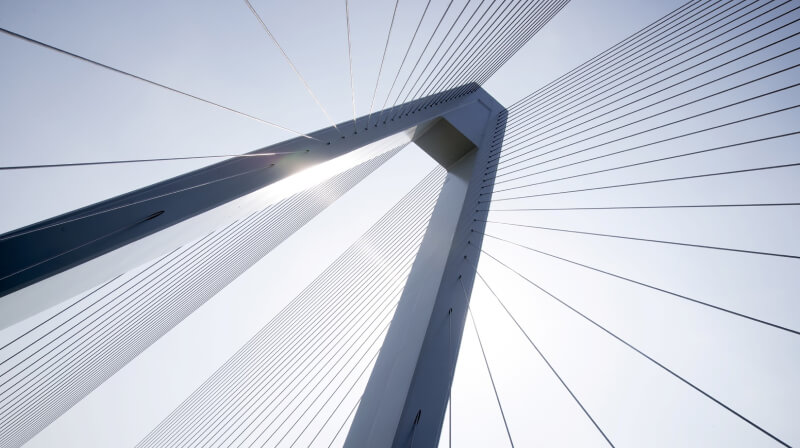A ‘Curative’ that Ails Arbitration

In a recent judgement [1]Delhi Metro Rail Corporation Ltd. v. Delhi Airport Metro Express Pvt. Ltd. dated 10 April 2024 (DMRC Case), the Supreme Court, in the exercise of its curative jurisdiction set aside an Arbitral Award (Award) of approximately USD 1 billion to Delhi Airport Metro Express Private Limited (DAMEPL), against Delhi Metro Rail Corporation (DMRC). This unprecedented judgement was arrived after 7 years of the Award being rendered and after more than 5 rounds of challenges in Indian courts.
In our view, the judgement of the Supreme Court in the DMRC Case upsets a legal balance that Indian courts were arriving at in ensuring the finality of arbitral awards by narrowing the scope of interference by Courts.[2]MMTC Ltd vs. Vedanta Ltd., (2019) 4 SCC 163; Dyna Technologies Pvt. Ltd vs. Crompton Greaves Ltd., (2019) 20 SCC 1;
UHL Power Company Ltd. vs. State of H.P., (2022) 4 SCC 116.
The judgement of the Supreme Court in the DMRC Case has two key challenges: First, it amplifies the contours of the curative jurisdiction of the Supreme Court, much beyond what was intended to be an extraordinary remedy to be exercised only in the rarest of the rare cases. In Rupa Hurra v. Ashok Hurra[3]2002 4 SCC 388., the Constitution Bench of the Supreme Court had laid down that the Court may entertain a curative petition to: i) prevent abuse of process, or ii) cure miscarriage of justice. In the DMRC Case, the Court found that sustaining an award that is “patently illegal” (a ground often agitated to challenge domestic awards) amounts to a “miscarriage of justice”, thereby warranting exercise of the narrow curative powers. Certainly, the Supreme Court’s act to “cure” an arbitral award on merits was not something envisaged within the scope of Rupa Hurra. Second, this judgement is inconsistent with and deviates from, several Supreme Court cases narrowing the scope of “patent illegality” as a ground for interference under Section 34 of the Arbitration and Conciliation Act (Act). Supreme Court in unequivocal terms has held that patent illegality should be illegality of such nature which goes to the root of the matter. A “mere erroneous application of law” or “re-appreciation of evidence” or substituting one view for another view taken by the Arbitral Tribunal is not a permissible ground for interfering with an arbitral award in an appeal[4]Ssangyong Engineering Construction Co. Ltd. v. NHAI, (2019) 15 SCC 131;. By labelling (perhaps wrongly) the Award as “unreasonable” and “perverse”, the judgement in DMRC Case seeks to come out of the very restrictions that statutorily prohibit any court from re-assessing the case on merits and re-interpreting the terms of the contract for setting aside an award.
Background to the dispute
In 2008, a concession agreement for the construction of an Airport Metro Express Line in New Delhi (AMEL) was executed as a public-private partnership between DMRC and DAMEPL. Clause 29.5.1(i) of the concession agreement entitled DAMEPL to terminate the said agreement if DMRC “failed to cure such breach or take effective steps for curing such breach” within a 90-day cure period.
In 2012, DAMEPL asserted that certain defects notified to DMRC were not cured in terms of time stipulated in the concessions agreement. As the defects remained uncured, the agreement was terminated by DAMEPL. DMRC challenged the termination in arbitration proceedings.
Meanwhile, in November 2012, DMRC and DAMEPL made a joint application to the Commissioner of Metro Railway Safety (CMRS) for the re-opening of AMEL and obtained a CMRS certification. Based on the CMRS certificate, which indicated that certain defects, and not all, were cured, the AMEL lines were re-started in 2013.
The Arbitral Tribunal, comprising three technical members, unanimously held that DMRC had failed to cure the defects as contemplated in the agreement and that the termination of the concession agreement by DAMEPL was valid.
Multiple Rounds of Litigation
The Arbitral Award encountered five (5) rounds of challenge before various Indian courts:
- Round 1: A single Judge of the High Court of Delhi upheld the Award;
- Round 2: DMRC challenged the same before the Appellate Bench of the High Court of Delhi, which partly overturned the Award on the validity of termination.
- Round 3: The Supreme Court of India set aside the Appellate Bench’s judgement and restored the Award.
- Round 4: A review petition against the judgement of the Supreme Court was filed and dismissed.
- Round 5: Finally, a curative petition was moved against the dismissal of the review petition by the Supreme Court by DMRC – which is subject matter of this case.
Decision of the Supreme Court
The Supreme Court, after delineating the grounds for challenging an arbitral award as laid down in Associate Builders v. DDA [5](2015) 13 3 SCC 49. , and Ssangyong Engineering Construction Co. Ltd. v. NHAI [6](2019) 15 SCC 131., reached the conclusion in its curative jurisdiction, that the Award suffered from patent illegality and perversity. This was primarily because:
i) The Arbitral Tribunal’s interpretation of Clause 29.5.1(i) was not an “alternate interpretation”, but one that was “unreasonable”. The Supreme Court was of the view that once “effective steps” were taken by DMRC, even if the same did not lead to a complete cure, DAMEPL could not have terminated the concession agreement according to Clause 29.5.1 of the Agreement.
ii) The Arbitral Tribunal had overlooked vital evidence (i.e. the CMRS certificate) that demonstrated that “effective steps” were taken by DMRC to cure the notified defects. In holding so, the Supreme Court found that , in restoring a “patently illegal” Award, which saddled a public utility with an exorbitant liability, caused a grave “miscarriage of justice”[7]DMRC case (at para 68).. This, the Supreme Court, held warranted the exercise of powers in terms of its judgement in Rupa Hurra.
Issues with the Supreme Court Judgement
While the judgement of the Supreme Court in the DMRC Case may have been rendered keeping the public interest in mind, it raises more concerns than it seeks to resolve:
- The judgement recognizes the limited scope of a curative jurisdiction and that it cannot sit over the Award as an appellate court; yet it ventures into the sole domain of an arbitral tribunal by re-interpreting the termination clause i.e. Clause 29.5.1(i). By holding that once “effective steps” are taken, Clause 29.5.1 (i) cannot be invoked, the judgement disregards the fact that “failure to cure” the breach/defect was also a ground for termination. The manner in which Supreme Court has sought to re-interpret the agreement appears restrictive and in any case, not permissible for challenging the Award.
- The ”vital” evidence i.e. CMRS certificate, that is found by the Supreme Court to be “overlooked” by the Arbitral Tribunal, was, in fact, considered by the Arbitral Tribunal and held to be “irrelevant” to the issue of the validity of the termination of the concession agreement. It was not a case, therefore, where the Arbitral Tribunal did not apply its mind and had overlooked “vital evidence”. In not considering this aspect, the Supreme Court has re-appreciated evidence that the Indian arbitration law expressly bars as a basis for setting aside an award.
- The judgement begs the question, was the Supreme Court required to “cure” the Award, given that the Award had already been approved twice by the Supreme Court itself and by the High Court of Delhi on the very issue of “patent illegality” under the Act? Undoubtedly, this judgement transgresses the well-settled policy of limited judicial interference qua arbitral awards.
- Even though the arbitral award may have traversed four (4) rounds of judicial scrutiny, the award would not have attained finality. The award may still be open to interference on the oft-invoked ground of “patent illegality” exercised through a limited curative jurisdiction. The Court cannot permit itself to be moulded by public interest concerns, in an arbitration proceeding, which is otherwise at its core a forum to resolve private commercial arrangements. The identity of the shareholder of one of the parties cannot dictate the outcome of a commercial dispute.
- In infrastructure projects, it is common to have technical experts or engineers as arbitrators, who may not be well versed with legal intricacies as well as a judicially trained and qualified mind. By employing a strict yardstick of interpretation and a high standard of evidentiary appreciation, the judgement raises questions for the appointment of technical experts as arbitrators. This in effect amounts to interference with the freedom of parties to choose arbitrators.
Interestingly, while the Supreme Court does caution that curative jurisdiction of the Court should not be used to “open the floodgates”, ironically, the judgement ends up doing precisely what the Supreme Court intended not to do.
Footnotes
| ↑1 | Delhi Metro Rail Corporation Ltd. v. Delhi Airport Metro Express Pvt. Ltd. dated 10 April 2024 (DMRC Case) |
|---|---|
| ↑2 | MMTC Ltd vs. Vedanta Ltd., (2019) 4 SCC 163; Dyna Technologies Pvt. Ltd vs. Crompton Greaves Ltd., (2019) 20 SCC 1; UHL Power Company Ltd. vs. State of H.P., (2022) 4 SCC 116. |
| ↑3 | 2002 4 SCC 388. |
| ↑4 | Ssangyong Engineering Construction Co. Ltd. v. NHAI, (2019) 15 SCC 131; |
| ↑5 | (2015) 13 3 SCC 49. |
| ↑6 | (2019) 15 SCC 131. |
| ↑7 | DMRC case (at para 68). |



